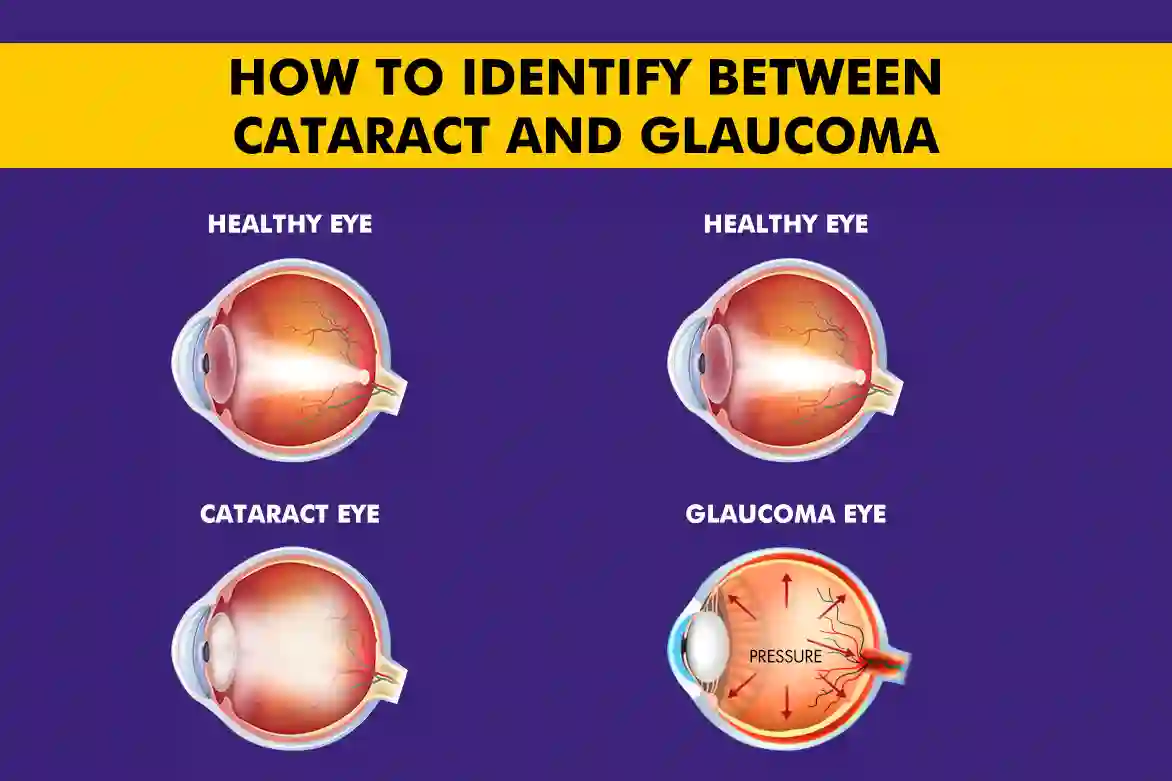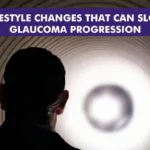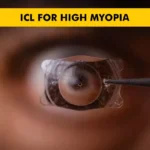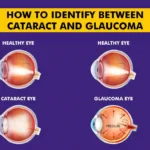Vision problems are common as people age, but not all vision issues are the same. Two prevalent conditions are cataracts and glaucoma, each affecting the eyes in different ways. Identifying the differences between these conditions is crucial for timely and appropriate treatment.
While both cataracts and glaucoma can lead to significant vision impairment, they have distinct symptoms, causes, and treatments. This article explores how to distinguish between these two eye conditions and provides insights into their diagnosis and management.
Understanding Cataracts: Definition, Symptoms and Causes
Cataracts are characterized by the clouding of the eye’s natural lens, which lies behind the iris and the pupil. This clouding can lead to blurred vision, difficulty with glare, and faded colors.
Symptoms of Cataract:
- Cloudy or blurry vision
- Sensitivity to light and glare
- Difficulty seeing at night
- Frequent changes in prescription for glasses or contact lenses
Causes of Cataract:
- Primarily aging
- Diabetes
- Smoking
- Prolonged exposure to ultraviolet light
- Certain medications
Recognizing Glaucoma: Key Indicators and Risk Factors
Glaucoma is a group of eye conditions that damage the optic nerve, often due to high intraocular pressure. This damage can lead to vision loss and blindness if not treated promptly.
Key indicators of glaucoma include gradual loss of peripheral vision, seeing halos around lights, eye pain, redness, and in some cases, sudden vision loss. Risk factors for glaucoma include age, family history, high eye pressure, thin corneas, and conditions such as diabetes and hypertension.
Comparative Analysis: How Cataracts and Glaucoma Differ
While both cataracts and glaucoma affect vision, they do so in distinct ways.
Cause of Vision Impairment:
- Cataracts: Caused by the clouding of the eye’s natural lens, leading to blurred vision.
- Glaucoma: Results from damage to the optic nerve, often due to elevated intraocular pressure, causing peripheral vision loss.
Symptoms:
- Cataracts: Gradual blurring of vision, faded colors, and increased sensitivity to glare.
- Glaucoma: Loss of peripheral vision, often described as tunnel vision, with potential progression to central vision loss.
Progression:
- Cataracts: Vision impairment progresses slowly and can be effectively treated with surgery.
- Glaucoma: Can lead to irreversible vision loss if not managed properly, requiring lifelong treatment.
Treatment:
- Cataracts: Treated with surgical removal of the clouded lens and replacement with an artificial lens, restoring vision.
- Glaucoma: Managed with medications, laser treatments, or surgery to control eye pressure and prevent further optic nerve damage.
Outcome:
- Cataracts: Surgery can significantly restore vision and improve quality of life.
- Glaucoma: Treatment focuses on preserving existing vision and preventing further loss, as damage is irreversible.
Management:
- Cataracts: Typically resolved with a one-time surgical procedure.
- Glaucoma: Requires ongoing management and regular monitoring to adjust treatment as needed.
Diagnosis Methods for Cataracts and Glaucoma
Diagnosing cataracts requires a thorough and detailed eye examination conducted by an eye care professional. This process typically includes several key tests to accurately assess the condition of the eye. A visual acuity test is performed to evaluate the sharpness and clarity of vision. A slit-lamp examination is used to closely examine the structures at the front of the eye, including the lens, for any signs of clouding. Additionally, a dilated eye exam is conducted, where special eye drops are used to widen the pupil, allowing for a more comprehensive inspection of the lens and other internal structures for cloudiness.
For diagnosing glaucoma, a series of specific tests are employed to determine the presence and extent of the condition. Measuring intraocular pressure, known as tonometry, is a crucial step, as elevated pressure can indicate glaucoma. An ophthalmoscopy is performed to examine the optic nerve for any signs of damage. Testing the field of vision, or perimetry, helps identify any loss of peripheral vision. Additional tests, such as gonioscopy, assess the angle where the iris meets the cornea, and pachymetry measures corneal thickness, both of which provide valuable information for a comprehensive diagnosis.
Treatment Options and Management Strategies
Cataract treatment typically involves surgery, a procedure where the clouded lens is broken up and removed, followed by implanting an artificial lens. This outpatient surgery allows patients to return home the same day, with most experiencing improved vision within days.
Glaucoma treatment aims to reduce intraocular pressure to protect the optic nerve, using medications like eye drops to manage fluid levels. Laser treatments or surgeries, such as trabeculectomy, may be needed for advanced cases. Regular monitoring is crucial to adjust treatments and effectively manage the condition, preserving vision and preventing further damage.
When to See a Doctor
It is important to see an eye doctor if you experience symptoms such as blurred or cloudy vision, difficulty seeing at night, or halos around lights, as these may indicate cataracts or glaucoma.
Early detection and treatment are crucial to prevent vision loss. Regular eye exams are recommended, especially for individuals over the age of 60 or those with risk factors for these conditions.
Conclusion
Understanding the differences between cataracts and glaucoma is essential for maintaining eye health and seeking appropriate treatment. While both conditions can impair vision, they have distinct causes, symptoms, and treatments.
Regular eye examinations and prompt medical attention can help manage these conditions effectively, preserving vision and quality of life.
FAQs
Cataracts primarily cause blurry or cloudy vision, while glaucoma often leads to loss of peripheral vision. An eye exam can confirm the diagnosis.
Yes, it is possible to have both conditions simultaneously, and each requires specific treatment.
Both conditions can affect vision, but glaucoma is more likely to cause irreversible blindness if untreated.
Slit-lamp exams detect cataracts, while tonometry, visual field tests, and optic nerve imaging are used for glaucoma.
Yes, cataracts are treated surgically, while glaucoma is managed with medications, laser procedures, or surgery.





